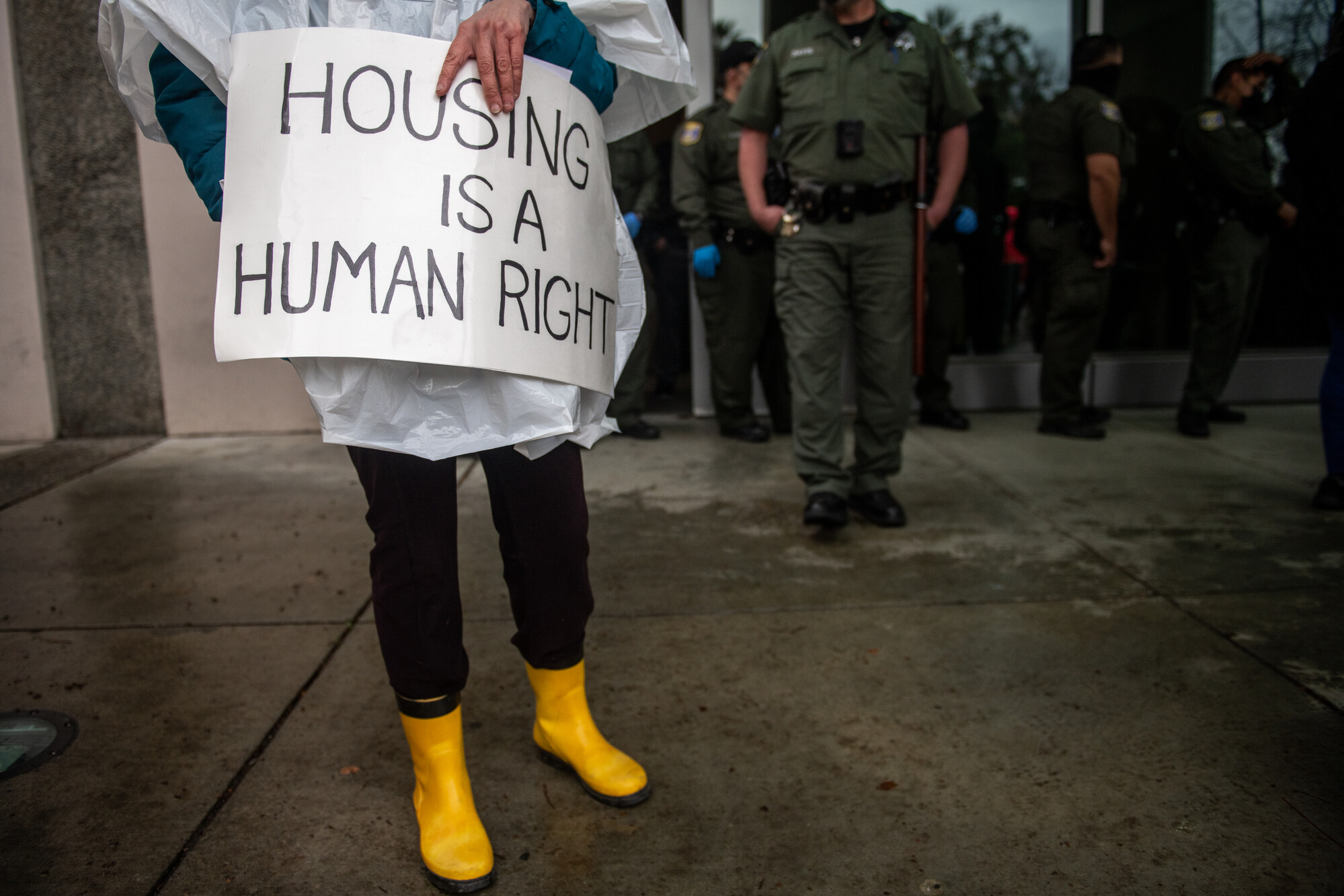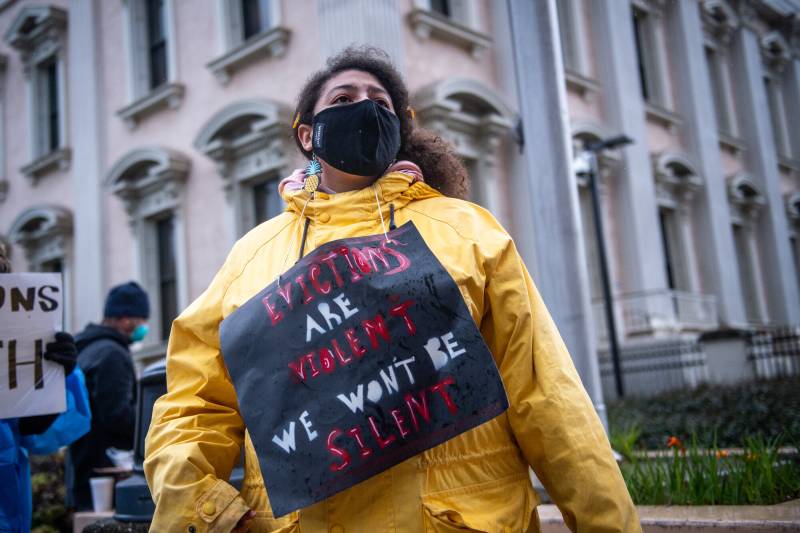For the third time in six years, California voters will decide in November whether to grant cities and counties more power to regulate rents.
Proposition 33 would repeal a 1995 law that curbs locals’ ability to cap rents, known as the Costa-Hawkins Rental Housing Act. The law prohibits cities and counties from imposing rent control on all single-family homes, condos and apartments built after 1995 and ensures landlords can bring rents up to market rate when a new tenant moves in.
Proposition 33 would do away with those provisions, allowing cities and counties to adopt local rules that control rents on all types of properties and for new tenants. It would also bar the state from passing any new laws limiting local rent control.
Voters twice rejected similar initiatives that would have gutted Costa-Hawkins, but rent control has become increasingly popular with advocates and political leaders as they struggle to rein in housing costs. The policy is also gaining traction nationally, with President Joe Biden and Vice President Kamala Harris embracing the cause.
Polling in California tracks this shift in attitudes. A 2018 poll by the Public Policy Institute of California (PPIC) found 52% of likely voters surveyed considered rent control a “good thing.” However, when it came to actually voting that year on a proposition that would have given cities more power to expand rent control, only about 40% supported it.
More recently, in a September PPIC poll, 51% of likely voters said they’d vote yes on Proposition 33, while another September survey, the California Elections & Policy Poll, found it was nearly tied. In that poll, 37% of respondents said they would vote in favor, 33% against and the rest undecided. Younger voters were more likely to support the initiative, older voters less so.
But does rent control work? The short answer is: It’s complicated, and it depends on who you ask. Among economists, rent control is a hugely controversial topic, and the research is mixed.
Here’s what to know about rent control in California:
What is rent control?
Rent control is a form of price control that sets ceilings on rent increases.
In the U.S., rent control dates back to WWI in some cities and was expanded during WWII. Early laws put a total freeze on rent hikes. By the ‘50s, most cities abandoned this strict form of rent control, and by the ‘70s, more moderate second-generation rent control policies gained popularity. These laws, sometimes referred to as “rent stabilization,” allow some increases in rents and exempt certain properties.
That’s the kind of rent control most common in the U.S. today. It’s mostly limited to coastal cities. In much of the country, state laws prohibit cities from passing rent caps.
Which California cities already have rent control?
At least 30 out of California’s 482 cities have some form of rent control, including San Francisco, Oakland, San Jose, Richmond and others in the Bay Area, according to the tenant advocacy organization Tenants Together.
California also has a statewide rent control law, which was passed in 2019. The Tenant Protection Act caps annual rent increases at 5% plus inflation, or 10%, whichever is lower. Units built within the last 15 years are exempt, as are most single-family homes and condos, plus duplexes with their owner living in one unit.
The Tenant Protection Act doesn’t impact local governments’ ability to pass or enforce more restrictive rent caps, but Costa-Hawkins still binds those local laws. Renters’ advocates argue that state law doesn’t go far enough and that cities should be able to decide what type of rent control would best protect tenants locally. That’s one of the big reasons they support repealing Costa-Hawkins.
The traditional view on rent control
Traditionally, economists have seen rent control as a really bad idea. A 1992 survey found over 90% of economists agreed the policies are inefficient, creating scarcity and driving up rents in non-regulated buildings. A 2012 poll found 81% of economists at prominent American universities opposed it.
Studies have also shown rent controls can lead to declines in housing quality because landlords have less incentive to maintain their properties. And studies have shown the policy reduces mobility — that is, people in rent-controlled apartments tend to stay put longer. While some argue that’s a good thing because it reduces displacement and contributes to neighborhood stability, others argue it’s a trap that keeps people from moving to take advantage of jobs or educational opportunities. They say that’s bad for individuals and the broader economy.
Lastly, economists have long argued rent control could, in theory, discourage developers from building new rental housing.

As support for rent stabilization has grown among renters and lawmakers, some economists have argued that research and real-world examples are refuting the traditional narrative, which they say is largely based on economic theory.
Last year, 32 economists penned a letter to the Federal Housing Finance Agency lobbying for the use of rent control across the country as part of a broader campaign advocating for federal renter protections. They argued the naysaying over rent control mirrors economists’ historical opposition to minimum wage laws, which predicted widespread job losses that never actually materialized.
As in that debate, they write, “The economics 101 model that predicts rent regulations will have negative effects on the housing sector is being proven wrong by empirical studies that better analyze real-world dynamics.”
They point to research that finds moderate rent regulations don’t dampen new construction and highlight the societal and economic benefits that come from bolstering neighborhood stability.
Rent control in the wild
More recent research into the real-world impacts of rent control describes a nuanced picture as it relates to rental prices, the stock of rental housing, and its impacts on tenants.
In one study from 2019, researchers took advantage of a natural experiment by examining the effects of a 1994 ballot measure that expanded rent control to small, multi-family properties in San Francisco that the city’s rent control laws hadn’t previously covered.
It found tenants in controlled units were 20% more likely to stay in those apartments compared to people who didn’t have access to rent control, and “the vast majority of those incentivized to remain in their rent-controlled apartment would have been displaced from San Francisco had they not been covered.” That was especially true for renters of color.
That finding seemed to bolster advocates’ claims that rent control is effective at stemming displacement. But, the research also pointed to evidence that bolstered opponents’ claims.
It found that landlords responded to the policy by converting their properties to condos, selling them or redeveloping. Over time, that led to a 15% drop in rental housing in the city and a shift toward buildings that cater to higher-income residents. As the traditional economists had predicted, it drove up costs for people who weren’t already in rent-controlled apartments.
However, Rutgers economist Mark Paul, who supports rent control, argues policymakers could prevent this reduction in rental housing stock by pairing rent caps with other regulations that mitigate such unintended consequences.
“For me, the evidence is quite clear that rent control can be tremendously beneficial,” he said.
Extreme vs. moderate
Paul and some other modern economists argue that the trick to rent control is balancing landlords’ needs with those of tenants while taking other steps to address the housing shortage, like building a lot more affordable apartments.
“Any policy, you can design a helpful version of it, or you can design a potentially harmful version of it,” he said. “We can design smart rent control policies to deliver both affordability and stability for renters while also maintaining a healthy market for people to continue building.”

To stop landlords from shirking maintenance, for instance, Paul said they should be allowed to pass on the costs of improvements to renters. Policymakers can do that by allowing rent increases above the rent control threshold in some cases so property owners can recover their investments.
To prevent landlords from converting their apartments to condos, Paul said lawmakers can put rules in place limiting those conversions. He also argues for policies that hold rents down not just for existing tenants but also for new tenants, a controversial provision referred to as vacancy control.
Much ado about vacancy control
The Costa-Hawkins Rental Housing Act allows landlords to reset rents when a new tenant moves in. One of the more controversial aspects of Proposition 33 is a provision in the measure that would do away with that and allow cities to cap rents even for new tenants moving in, aka vacancy control.
Vacancy control makes rent caps far more effective for tenants, but landlords loathe it, said Michael Manville, chair of Urban Planning at the UCLA Luskin School of Public Affairs.
“Places that have long-standing regimes of vacancy control, they do tend to see market declines in the quality of their rental housing,” said Manville, who’s working on a study of rent stabilization in Los Angeles. “It gives the landlords a strong incentive to try and leave the market.”
And that’s exactly what Gustavo Gonzalez, who owns two small apartment buildings in San Jose, said he would do if Proposition 33 passes and San Jose adopts vacancy controls.
“That’s going to make it real difficult for me to make up the funds to maintain and take care of my building,” he said.
Manville sees this as the conundrum of rent control: “Strong rent control holds down the rents but creates a real mess. Softer rent control, like California has right now, avoids a lot of those messes but really doesn’t hold the rents down very much.”
But advocates argue that without vacancy control, tenants are often locked in place since they don’t want to give up their low rent, and that, in turn, encourages property owners to go to great lengths to push them out and raise rents — a problem advocates say is widespread in California, despite laws meant to protect tenants.

